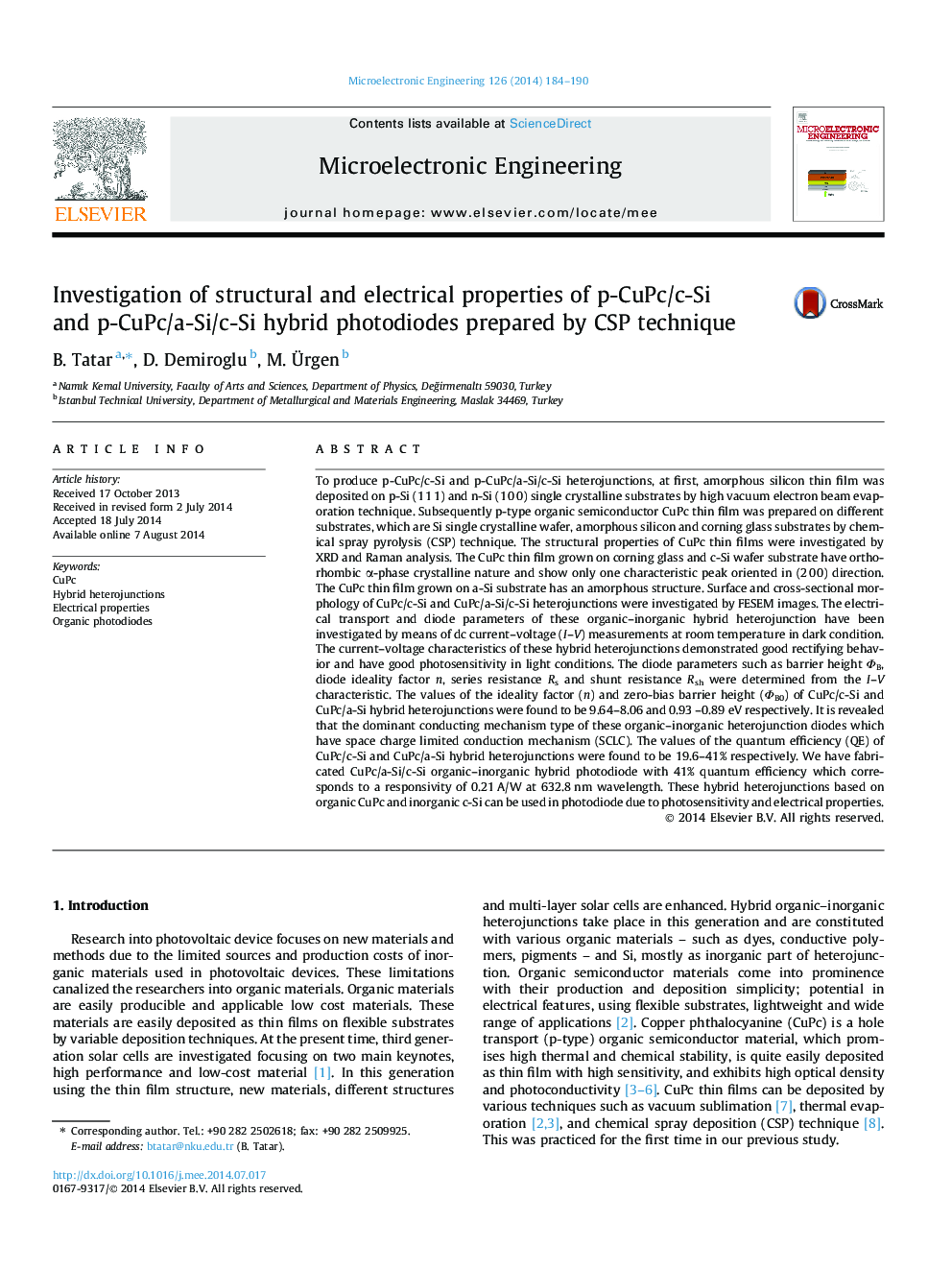| Article ID | Journal | Published Year | Pages | File Type |
|---|---|---|---|---|
| 539357 | Microelectronic Engineering | 2014 | 7 Pages |
•The first report on the growth and characterization of p-CuPc films on different substrates via CSP technique.•We report CuPc/c-Si and CuPc/a-Si/c-Si organic–inorganic hybrid heterojunction.•We investigate the electrical properties of these hybrid heterojunctions.•We determine the photovoltaic properties of the hybrid heterojunction for photodiodes.
To produce p-CuPc/c-Si and p-CuPc/a-Si/c-Si heterojunctions, at first, amorphous silicon thin film was deposited on p-Si (1 1 1) and n-Si (1 0 0) single crystalline substrates by high vacuum electron beam evaporation technique. Subsequently p-type organic semiconductor CuPc thin film was prepared on different substrates, which are Si single crystalline wafer, amorphous silicon and corning glass substrates by chemical spray pyrolysis (CSP) technique. The structural properties of CuPc thin films were investigated by XRD and Raman analysis. The CuPc thin film grown on corning glass and c-Si wafer substrate have orthorhombic α-phase crystalline nature and show only one characteristic peak oriented in (2 0 0) direction. The CuPc thin film grown on a-Si substrate has an amorphous structure. Surface and cross-sectional morphology of CuPc/c-Si and CuPc/a-Si/c-Si heterojunctions were investigated by FESEM images. The electrical transport and diode parameters of these organic–inorganic hybrid heterojunction have been investigated by means of dc current–voltage (I–V) measurements at room temperature in dark condition. The current–voltage characteristics of these hybrid heterojunctions demonstrated good rectifying behavior and have good photosensitivity in light conditions. The diode parameters such as barrier height ΦB, diode ideality factor n, series resistance Rs and shunt resistance Rsh were determined from the I–V characteristic. The values of the ideality factor (n) and zero-bias barrier height (ΦB0) of CuPc/c-Si and CuPc/a-Si hybrid heterojunctions were found to be 9.64–8.06 and 0.93 –0.89 eV respectively. It is revealed that the dominant conducting mechanism type of these organic–inorganic heterojunction diodes which have space charge limited conduction mechanism (SCLC). The values of the quantum efficiency (QE) of CuPc/c-Si and CuPc/a-Si hybrid heterojunctions were found to be 19.6–41% respectively. We have fabricated CuPc/a-Si/c-Si organic–inorganic hybrid photodiode with 41% quantum efficiency which corresponds to a responsivity of 0.21 A/W at 632.8 nm wavelength. These hybrid heterojunctions based on organic CuPc and inorganic c-Si can be used in photodiode due to photosensitivity and electrical properties.
Graphical abstractFigure optionsDownload full-size imageDownload as PowerPoint slide
